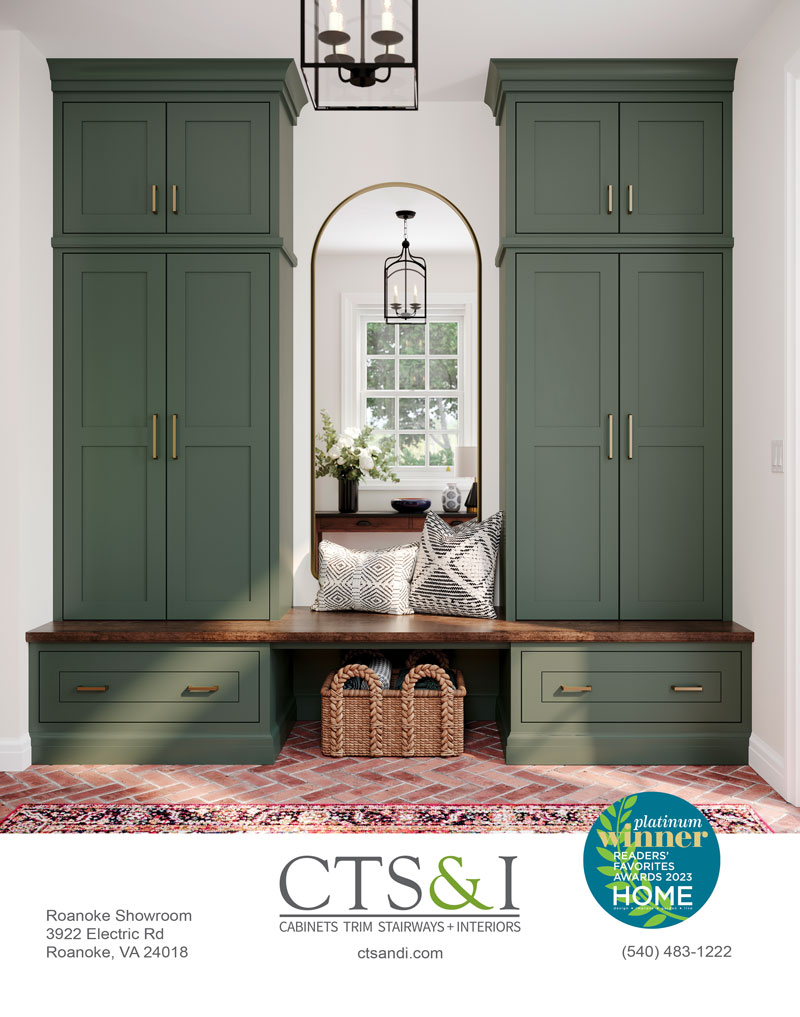PLANNING FOR PEACE OF MIND

Above Photo: Hoprich Photography Courtesy of Brandon Oaks
FUTURE FORWARD
Area Retirement Communities Provide a Continuum of Care
Our needs change over time. As adults, we control how we will meet those needs and find fulfillment in life. That control shouldn’t be relinquished in our senior years — and doesn’t need to be — if we plan ahead.
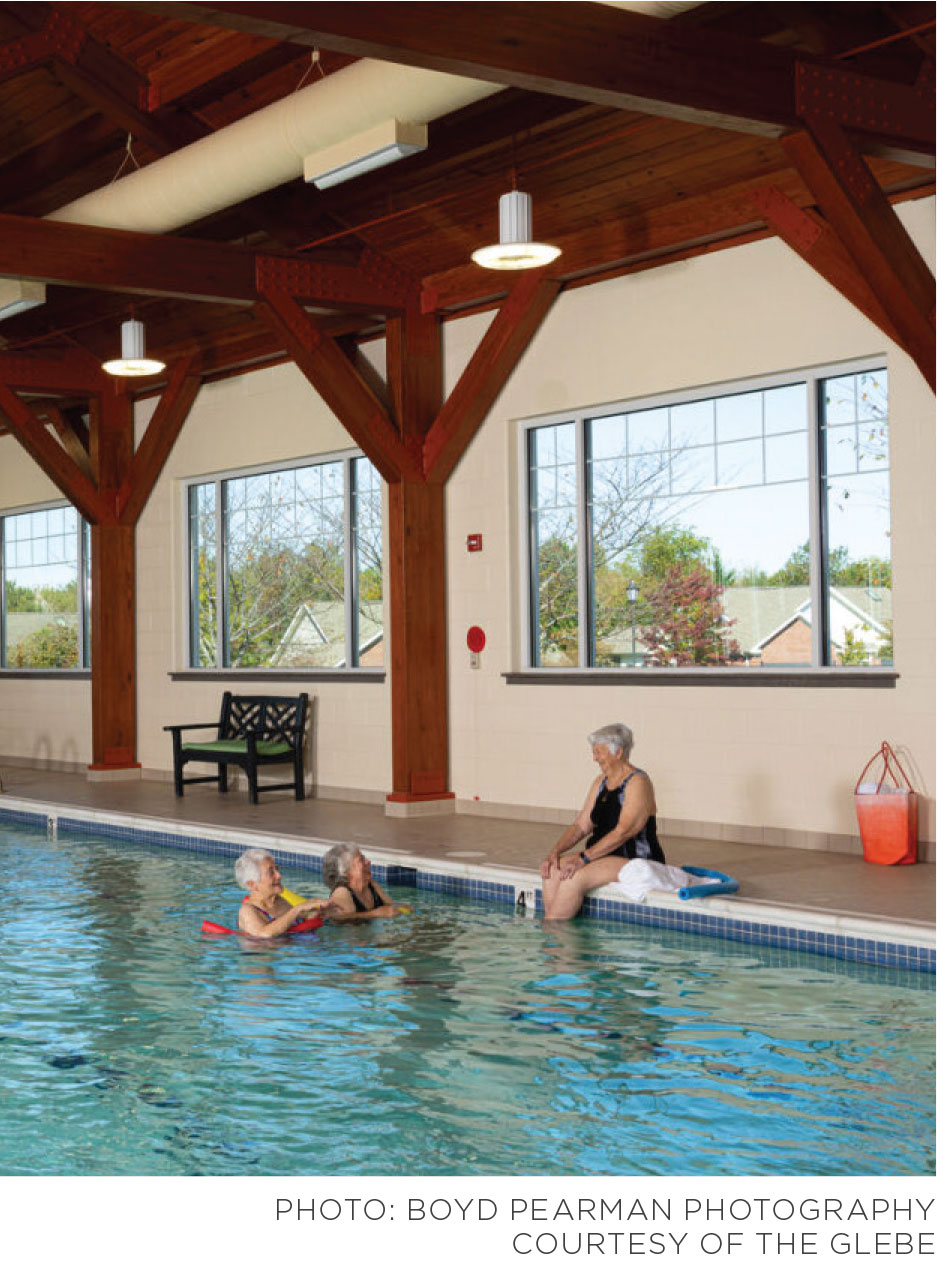 In the Roanoke Valley, there are several retirement communities where residents can start off in independent living then shift to different levels of care as they age. When independent living becomes difficult, residents may move to assisted living for more help and then to skilled nursing care or memory care within the same community. For some, the path is charted out beforehand with a continuing care retirement community (CCRC). These facilities usually require a long-term contract with an upfront premium and additional monthly fee that secures all housing, residential services and nursing care for a resident’s lifetime.
In the Roanoke Valley, there are several retirement communities where residents can start off in independent living then shift to different levels of care as they age. When independent living becomes difficult, residents may move to assisted living for more help and then to skilled nursing care or memory care within the same community. For some, the path is charted out beforehand with a continuing care retirement community (CCRC). These facilities usually require a long-term contract with an upfront premium and additional monthly fee that secures all housing, residential services and nursing care for a resident’s lifetime.
At The Glebe, a CCRC in Daleville, residents have the benefit of enjoying community-based services and amenities while having a plan in place for their future. “As circumstances change, residents remain on site, close to friends and neighbors, and receive services and care through assisted living, memory care and long-term care and skilled nursing, according to their needs,” says Shelli Schinkus, director of Sales and Marketing.
Some CCRCs offer the chance to reside in one place the entire time while others require a physical move from independent living to assisted living or skilled nursing care.
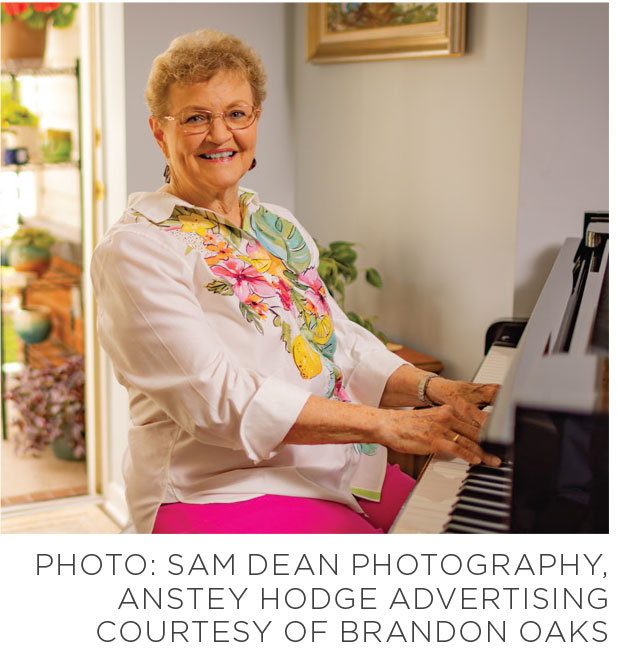 CCRCs: Challenges and benefits
CCRCs: Challenges and benefits
Saying goodbye to a house and neighborhood that you have called home for most of your adult life is never easy. At a CCRC, residents know they will never face another move and have a sense of familiarity and stability when their level of care changes.
“Change is hard, especially when you have lived in a home for many years,” Schinkus says. “However, when the time comes that home maintenance is too much of a burden, lack of socialization becomes a concern, or it’s simply time to downsize, retirement communities are a great option.”
Carter Hanna, director of Marketing and Sales at Brandon Oaks Life Plan Community, a CCRC that offers a full spectrum of care on its Roanoke campus, says after residents meet the challenges of a big move, “the benefits of a community like Brandon Oaks are immense.” Such benefits include maintenance-free living, multiple dining venues, planned activities and outings, on-site wellness classes, features such as a dog park and customizable residences.
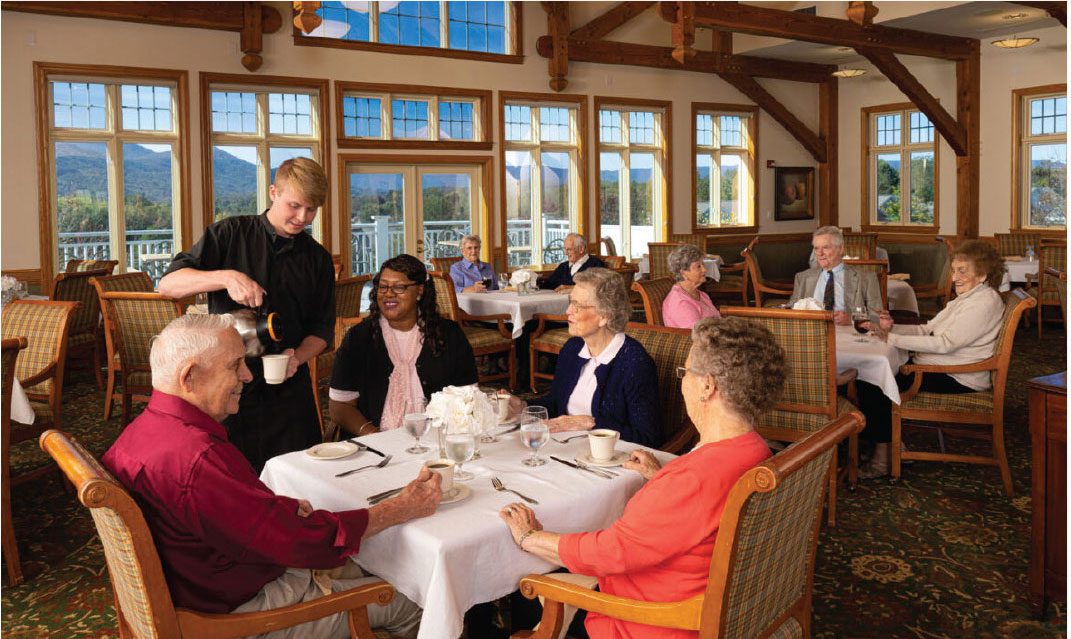 PHOTO: BOYD PEARMAN PHOTOGRAPHY COURTESY OF THE GLEBE
PHOTO: BOYD PEARMAN PHOTOGRAPHY COURTESY OF THE GLEBE
Peace of mind for all family members is invaluable. When it comes time to move into higher levels of care, Hanna says it may be difficult for the families to make the decision at first, “but once residents are in the level of care that meets their needs, it can be a relief for their families and loved ones.”
One of the biggest challenges for families considering senior housing options is finances, and retirement communities haven’t been immune to the rising inflation that is taking its toll on consumers nationwide. CCRCs can sometimes shield people from spiraling health care costs.
With a “life care” contract, as The Glebe calls it, “all levels of care are available for the individual’s lifetime at the community and are offered with a predictable monthly fee,” Schinkus says. “This ensures individuals never have to worry about catastrophic nursing home costs and have significant peace of mind knowing the monthly service fee in independent living remains the same as they transition between levels of care.”
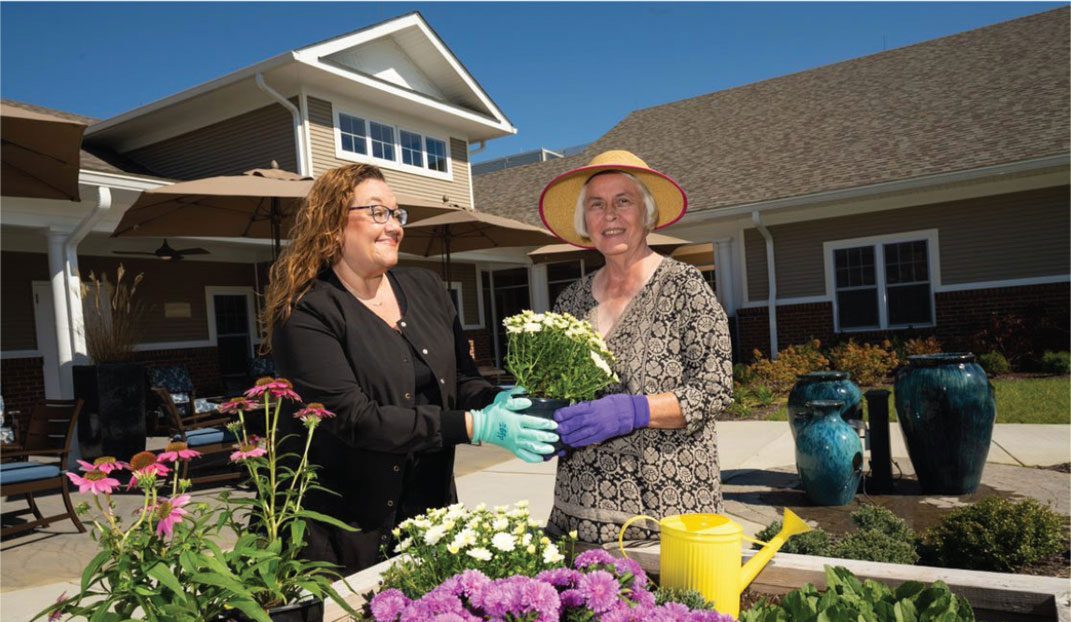 PHOTO: BOYD PEARMAN PHOTOGRAPHY COURTESY OF THE GLEBE
PHOTO: BOYD PEARMAN PHOTOGRAPHY COURTESY OF THE GLEBE
Signing up with a CCRC means the assurance of personalized care that follows you as you age. It’s about empowering the residents to make their own decisions on their care for as long as they are able to. “In partnership with each resident, their family and physician, our specialized team develops an individualized care plan to support maximum independence,” Schinkus says.
Before signing a contract, consult an elder-law attorney who has experience with CCRCs to help you understand the full extent of the contract. Upfront entry fees can be costly (sometimes as much as a home mortgage), so careful financial planning is important, including planning for long-term care insurance.
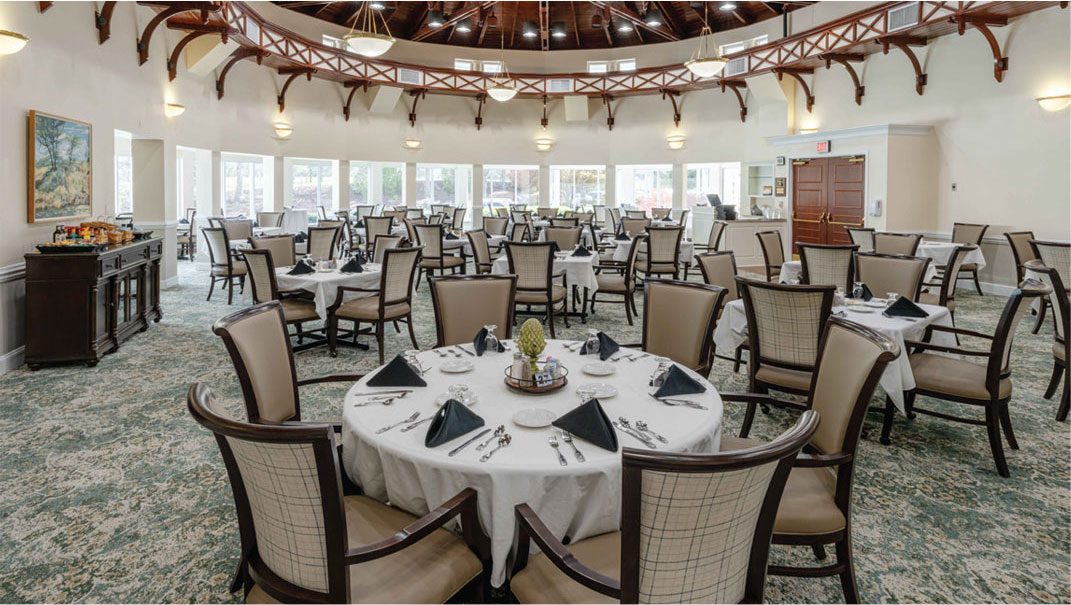 PHOTO: BOYD PEARMAN PHOTOGRAPHY COURTESY OF BRANDON OAKS
PHOTO: BOYD PEARMAN PHOTOGRAPHY COURTESY OF BRANDON OAKS
Healthcare needs may be the biggest concern with joining a CCRC, as families must assess current and anticipated needs. When touring a CCRC, view the independent living housing but also all other areas, asking those tough questions that many tend to avoid but are necessary when making a life plan.
“Research is important, knowing how your loved one may transition through various care levels should the need arise and what is available at those locations,” Hanna notes. “Pictures and virtual tours are helpful if you are not within visiting distance. However, taking a physical tour of the community will allow you to see its culture and better understand if it is the right place for you or your loved one. Talk to the residents who live there, see what they have to say. Maybe join them for a meal and try the food — that is an important element, too.”
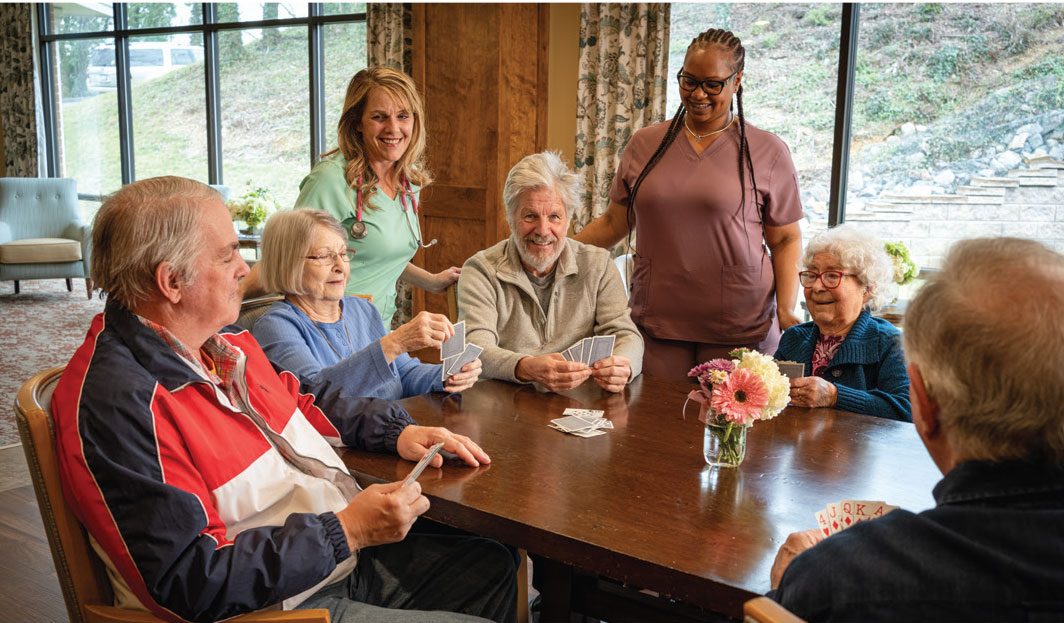 PHOTO: BOYD PEARMAN PHOTOGRAPHY COURTESY OF OUR LADY OF THE VALLEY
PHOTO: BOYD PEARMAN PHOTOGRAPHY COURTESY OF OUR LADY OF THE VALLEY
The alternative
Some retirement communities are not classified as CCRCs but are similarly committed to providing top-quality care on different levels as residents age. With no long-term contract or buy-in involved, the focus is on meeting current needs.
At Our Lady of the Valley in Roanoke, a nonprofit, faith-based senior care community sponsored by the Catholic Diocese of Richmond, residents can lease month to month. They can enter assisted living (independent living is not offered) and live in an apartment where they receive help with needs such as medications.
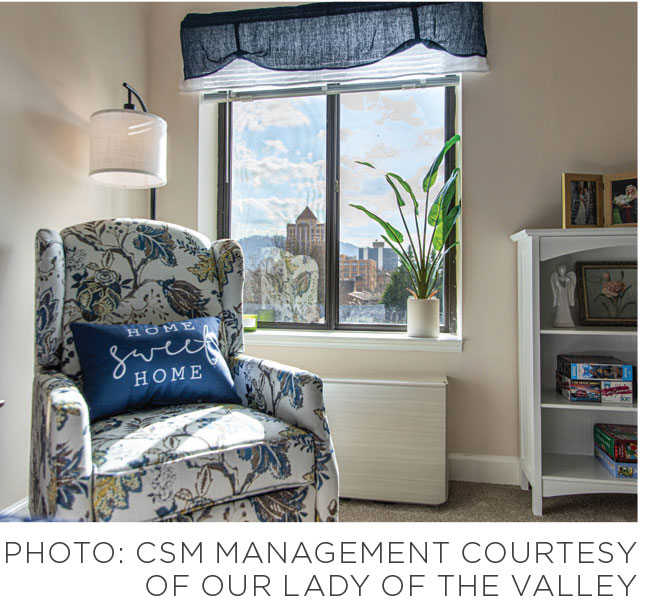 “If we notice a resident changes over time, we can offer them therapy, physical or occupational, and bathing, laundry, getting ready for bed at night,” says Erin McKeon, admissions director of Assisted Living and Memory Care. “The more personal care the person gets, that will change their level of care but they can stay right where they are.” (A move is only required for memory care or when long-term nursing is needed.)
“If we notice a resident changes over time, we can offer them therapy, physical or occupational, and bathing, laundry, getting ready for bed at night,” says Erin McKeon, admissions director of Assisted Living and Memory Care. “The more personal care the person gets, that will change their level of care but they can stay right where they are.” (A move is only required for memory care or when long-term nursing is needed.)
She says her residents find it hard at first to adapt to an apartment after living in their homes for 50 or 60 years. But time and time again, she attests that residents “do beautifully” when they have less stress. “When it’s all done for them — the bed is made, medications are administered and monitored — they get to enjoy living here. Most of the time in their home, they only live in a small part of it anyway, so when you give them a space that mimics that, it’s like they’re home. They can bring their own furniture, artwork, bedding, anything so they are able to feel comfortable in the setting and not feel like they have to let go of everything.”
Facilities that don’t operate as CCRCs still focus on providing an engaging environment with a robust calendar of activities.
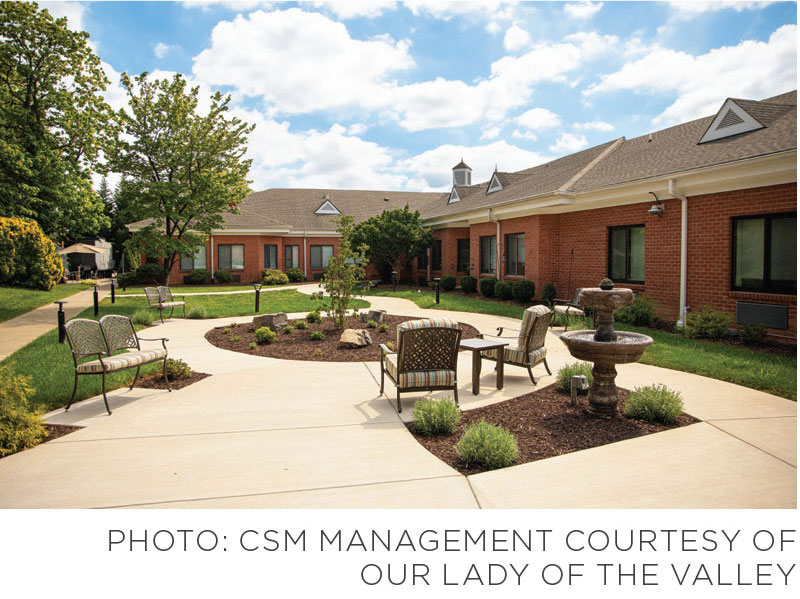 “We have a team of professionals who are solely focused on providing life enrichment,” McKeon says. “Residents want to have a purpose and sense of community. The community of the staff, friends they’ve met, their providers checking on them every day plus the leadership teams operating these buildings, it’s like a small little town — it is a community.”
“We have a team of professionals who are solely focused on providing life enrichment,” McKeon says. “Residents want to have a purpose and sense of community. The community of the staff, friends they’ve met, their providers checking on them every day plus the leadership teams operating these buildings, it’s like a small little town — it is a community.”
DOWNSIZING YOUR HOME?
Look for tips in the next Future Forward:
Senior Housing feature this fall.
When is it time to move?
Perhaps the best people to answer this question are senior living residents. Schinkus says new residents often tell her: “Before you need it.”
“As people get older, where you live can make a significant impact on your physical and mental health. While this is a personal decision, the best time to come is when you can still enjoy the engaging lifestyle,” she says. “When the hassles of home ownership become too much, and you’re ready to put a solid plan in place for future needs, it’s a good time to consider a CCRC.”
Likewise, at Brandon Oaks, “one thing that we always hear once residents move in is, ‘I wish I had done this sooner,’” Hanna says. “While it is hard to say what the right time is, it always helps to plan ahead … we recommend the family, or loved ones, begin to reach out to communities once they notice any decline in abilities.”
The signs can be everyday tasks that aren’t being completed — when they are no longer able to do yardwork, grocery shop or pay their bills on time.
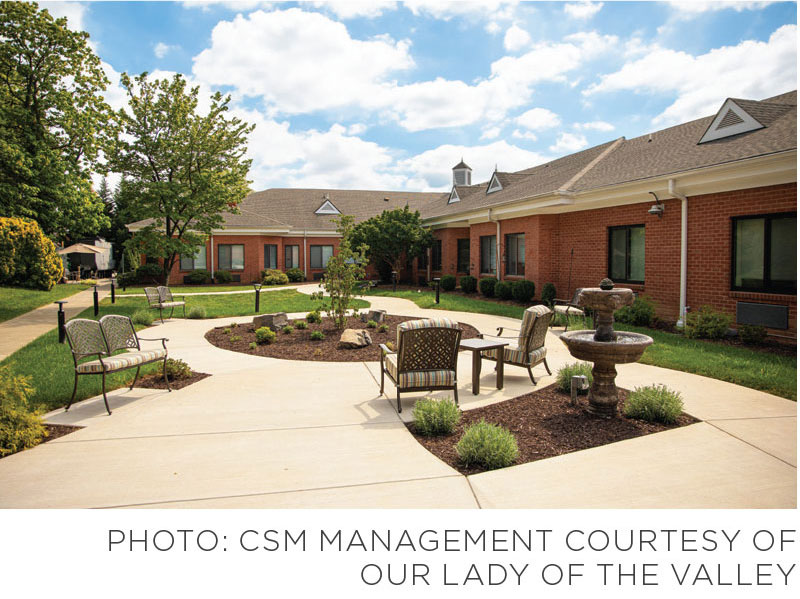 “For a family to start considering an option like [assisted living], the best time would be before it’s a crisis,” McKeon says. “You want to be aware of your family member’s actions at home: are they going in and out of a hospital, are they getting hydrated, not eating like they should, losing weight, their prescription bottles are full? You want to notice the little red flags and the more that are there glaring at a family, you really need to do something.”
“For a family to start considering an option like [assisted living], the best time would be before it’s a crisis,” McKeon says. “You want to be aware of your family member’s actions at home: are they going in and out of a hospital, are they getting hydrated, not eating like they should, losing weight, their prescription bottles are full? You want to notice the little red flags and the more that are there glaring at a family, you really need to do something.”
Seeing is believing. All senior housing providers will offer tours, even years before you’re ready to make decisions.
“While many communities offer an array of similar services and amenities, every community is different with their financial structure as well as levels of supportive care they offer,” McKeon says. “The good news is that there are many great options.” ✦
assisted living, community-based services, continuing care retirement community (CCRC), independent living, life care, memory care, nursing care, Retirement communities, senior housing options
